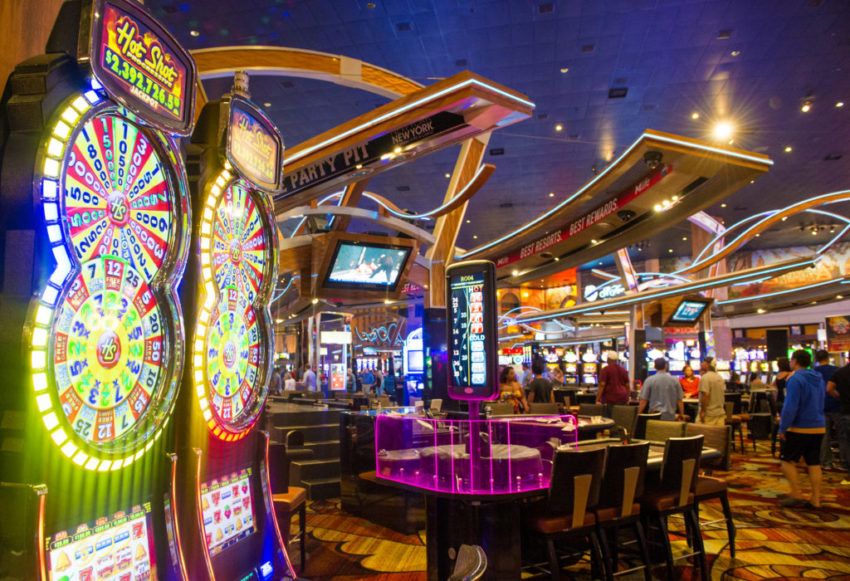
Casino games have long captivated people’s attention, drawing participants into a realm filled with luck, strategy, and the allure of adventure. Each game is painstakingly crafted not just for fun, but also to evoke particular emotional responses that keep gamblers engaged and committed. Understanding the drives behind these designs reveals much about how behavioral psychology plays a key role in the gaming experience.
From the vivid lights and vibrant sounds to the complex layering of systems and rewards, casino games are designed to create an atmosphere of excitement and expectation. Game designers leverage behavioral strategies to influence gambler behavior, whether through the use of winning opportunities, close-call situations, or social connections. By examining these factors, we can better appreciate how casino games fulfill not just a want for entertainment, but more profound psychological needs for adventure and hazard.
Comprehending Gamer Behavior
Casino games are designed with a deep understanding of player psychology, which is vital for drawing in and holding players. The excitement of the game, coupled with the expectation of winning, produces a formidable allure. Game designers employ elements like audio cues, vibrant graphics, and engaging gameplay to capture attention and generate emotional responses. These sensory effects enhance the overall experience, making players feel more attached in the game.
Another important aspect of player behavior is the notion of risk and reward. Casino games often weigh high-risk scenarios with the potential for considerable rewards, which can cause the occurrence known as near-miss experience. When players come within reach to winning, the brain produces dopamine, reinforcing their behavior and encouraging them to keep playing in quest of that hard-to-reach win. This cycle of wish and disappointment plays a key role in how games are designed and marketed.
Lastly, social elements also play a pivotal role in player behavior at casinos. Many games are made to be played in groups or with other players, fostering a sense of community and shared experience. The interaction inherent in games like poker enhances enjoyment and can lead to prolonged gaming periods. Designers leverage on this by designing environments that invite players to remain, socialize, and return, making the overall casino experience more attractive.
The Role of Imagery and Audio
Visuals and audio play a significant role in improving the player’s experience within casino games. Designers utilize vibrant colors, eye-catching graphics, and captivating animations to capture players’ attention and hold their focus. The use of themes, such as exploration or luxury, helps create an enthralling atmosphere that takes players into a different world. By appealing to the senses, these elements add to a heightened emotional response, encouraging players to interact more deeply with the games.
Sound design is just as important in reinforcing the experience of casino games. The combination of background music, audio effects for successful combinations, and ambient noises creates an auditory landscape that holds players fascinated. Audio cues associated with victories, such as chiming bells or celebratory music, evoke feelings of excitement and satisfaction, encouraging players to continue playing. These sound cues are strategically placed to enhance the thrill of the game and create a more engaging experience.
Moreover, the synchronization of imagery and audio is essential for supporting the game’s overall concept and atmosphere. Each element should coordinate seamlessly to create a cohesive experience that pulls players in. The effective use of this integration not only enhances user satisfaction but also increases the chances of repeat play, as players become more engaged in the captivating world that the gambling games offer. This thoughtful integration of imagery and audio ultimately enhances player engagement and loyalty.
Reward Structures and Participation
The creation of casino experiences significantly depends on incentive systems to keep players involved and coming back for more. These structures are rooted in behavioral theories that exploit human behavior and desire. Participants are often motivated by the excitement of success, which is reinforced by immediate feedback through the game structure’s mechanics. This prompt satisfaction not only improves the gaming experience but also cultivates a sense of success, encouraging participants to continue participating in hopes of greater gains.
Casinos implement various reward structures, including jackpots, bonuses, and multipliers, to engage players. These elements create a layer of thrill that sustains engagement. keo nha cai Additionally, the randomness of results plays a crucial role in keeping attention. The variable reward system, where wins are random but happen often enough, maintains players on edge and driven to continue participating. This loop of hope and expectation is essential to the effectiveness of casino games.
In addition, community aspects, such as tournaments and multiplayer features, enhance the participation factor by leveraging the desire to compete of participants. The shared experience of gaming with fellow participants can intensify the excitement of success and create a community atmosphere within the casino. By combining these community elements with efficient reward systems, casino games not only offer entertainment but also nurture a deeper bond among participants, reinforcing their commitment to the overall experience.
